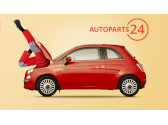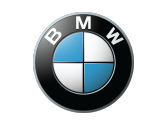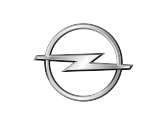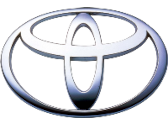Which brand are you looking for?

Lynk & Co
Lynk & Co
Available parts: 2
_logo.png)
Mg (saic)
Mg (saic)
Available parts: 4

Abarth
Abarth
Available parts: 1

Alpina
Alpina
Available parts: 1

Cadillac
Cadillac
Available parts: 6

Cupra
Cupra
Available parts: 3

DS
DS
Available parts: 4

Ferrari
Ferrari
Available parts: 3

Hummer
Hummer
Available parts: 1

Infiniti
Infiniti
Available parts: 1

Lada
Lada
Available parts: 2

Lancia
Lancia
Available parts: 3

LDV
LDV
Available parts: 1

Lincoln
Lincoln
Available parts: 1

Lotus
Lotus
Available parts: 1

MAN
MAN
Available parts: 1

Maserati
Maserati
Available parts: 1

Maxus
Maxus
Available parts: 2

Polestar
Polestar
Available parts: 3

Proton
Proton
Available parts: 1

Rover
Rover
Available parts: 3

Talbot
Talbot
Available parts: 1

Think
Think
Available parts: 1

Vauxhall
Vauxhall
Available parts: 1

Xpeng
Xpeng
Available parts: 1
Brake boosters
Brake Boosters
What is a Brake Booster and What Does it Do?
A brake booster, alternatively referred to as a ‚brake servo‘ or a ‚vacuum booster,‘ accomplishes what the name implies: it assists in the ‚boost‘ of brake performance. A brake booster simplifies braking for the driver by increasing the force applied without requiring the driver to apply additional force to the foot pedal.
Components of a Brake Booster
A brake booster consists of five parts: the body, booster piston, booster return, control valve, reaction valve, and spring. It consists of two components separated by a diaphragm, one of which maintains a constant pressure in the chamber while the other varies the amount of pressure.
Types of Brake Boosters
Vacuum Brake Booster
The most common type is the vacuum brake booster. It uses the engine vacuum in naturally aspirated gasoline engines to increase the amount of pressure applied to the brake pedal.
Vacuum Pump
Some road vehicles replace the engine intake manifold with a vacuum pump.
These are some examples:
- Automobiles with turbocharged engines
- Diesel-powered cars
- Electrically powered cars
- Hybrid cars
Vacuum pumps can be powered mechanically (via the engine) or electrically (electric brake booster). The vacuum pump is also used at high altitudes where naturally aspirated vehicles cannot generate enough vacuum for the brake booster.
Hydraulic Brake Boosters
Instead of relying on vacuum pressure, this brake booster uses direct hydraulic pressure generated by the power steering pump.
Is It Possible For Me To Replace My Own Brake Booster?
It is not advisable to replace this part on your own if you are not a qualified mechanic. You’d need to secure the booster properly to the firewall bracket, connect it to the master cylinder, deal with the vacuum line and intake manifold, and make sure that every bolt and hose clamp is secure. And that is only a fraction of what is involved in removing and replacing a booster!
The braking system is not something you can afford to repair on your own to save money. There is no room for error, and even the tiniest mistake could cost you much more than you are willing to pay. To avoid this, take your vehicle to a trusted mechanic for repair.
Troubleshooting a Brake Booster
A brake booster can cause several problems. Turn off the engine and press and release the brake pedal several times to check its condition. This prevents a vacuum from forming in the booster. Then, while keeping your foot firmly on the brake pedal, start the engine. There should be a slight give in the foot when the engine starts, indicating that the booster is working well.
Brake Booster’s Lifespan
A brake booster should be able to last at least 150,000 miles. There’s no reason why a well-maintained car can’t get far more miles out of its brake booster.
If you experience any symptoms of a failing brake booster, you should get your car checked out by a mechanic as soon as you can. This is the only way to tell if your brake booster needs to be repaired or replaced, as there is no specific lifespan for this part.
What Are the Symptoms of a Bad Brake Booster?
Stubborn Brake Pedal Action
A stiff brake pedal is frequently a telltale sign of brake booster failure. A failing brake booster loses its ability to amplify the force generated by your foot, requiring you to exert additional effort when pressing the brake pedal.
This decreased force on the master cylinder lowers the hydraulic pressure in the brake fluid, making braking more difficult.
Significantly Increased Braking Distance
If you’ve noticed that your car isn’t stopping as quickly as it once did, you may have a brake booster problem.
Higher Brake Pedal
The brake pedal may travel than usual (i.e., it is „high“), or it may take longer to return to its original position after you let go. Either of these conditions can occur due to vacuum chamber imbalance in a failing vacuum brake booster.
Audible Hissing
Have you ever heard a hissing sound when you apply the brakes? This could be a vacuum booster leaking through the diaphragm or housing, or it could be a vacuum hose leak.
Warning Lights Flashing
If your car is equipped with an electronic brake booster, its failure may impair the anti-lock braking system (ABS). As a result, your brake warning lights, such as the anti-lock braking system, will illuminate.
Fluid Leakage
Fluid leaks can indicate a variety of different issues with your vehicle. If your car is equipped with hydraulic boosters and is leaking power steering fluid, there is a good chance your hydro-boost assembly will fail shortly.
Electronic brake boosters integrated into the master cylinder may also develop fluid leaks, impairing their performance.
Can You Drive With a Faulty Brake Booster?
The most common indicator of a faulty brake booster is a pedal that is extremely difficult to push. Brake booster malfunctions must be repaired quickly, as the vehicle is not safe to drive with a faulty booster.
What Causes a Brake Booster to Go Bad?
Inadequate vacuum pressure
One of the most common causes of a failed brake booster is a vacuum leak in the engine. This typically occurs as a result of an exposed or broken hose. As a result, air enters the system and is easily identifiable because the engine will idle poorly and be reluctant to move faster than usual.
Internal Leakage
The brake booster is equipped with an incredible internal diaphragm that can leak or harden. This condition occurs most frequently in areas of high temperature, i.e., cold or occasionally dry areas, putting diaphragm material in an undesirable position. Generally, the diaphragm is not available as a single component.
When it comes to internal leakage, there are only two possible scenarios. Either there is a leak in the hose allowing air to escape, or the diaphragm is of poor quality.
Push Rod Issues
A push rod is a component of the brake system that connects the brakes to the brake booster. If you recently replaced or repaired your master cylinder and now discover that your brakes are not properly working, the pushrod may have misaligned during the repair.
Valves
As with the ports, the springs in the boosters can wear out or break during my time. Check waves may open and close independently, failing the power brakes. This failure is easily identifiable by its whistling noises.
Will Brakes Still Work Without a Booster?
Yes, though you will need to apply significantly more pressure to bring the car to a complete stop. Even if the boost is lost, a mechanical connection remains within the booster. Additionally, one can modify a vehicle’s brake system to eliminate the booster.
Can You Use a Used Brake Booster?
There is nothing to stop you from purchasing and installing a used power brake booster. It is possible to find a used one that has already been rebuilt or replaced. However, you should always be ready to exchange the used for a new one in case of failure.
How Much Does a Brake Booster Cost?
The average cost of replacing a brake booster is between €288 and €1107. Labor costs are typically between €88 and €177, while car parts can cost as little as €88 or as much as €797 (or more). The cost varies depending on the make and model of your car and the mechanic’s labour rates.
How Much Does a Used Brake Booster Cost?
A used brake booster costs around €113 to €204, depending on your car model.
The brake booster is a critical component of the braking system in your vehicle. That is why it is always prudent to check the condition of your brake booster. Maintain a consistent schedule of maintenance to ensure your safety on the road.
If you notice any of the symptoms discussed, contact Autoparts24 to recommend and help you find the right brake booster for your car.
Spare parts for sale of type by car brands
Our more than 120 car chippers now have more than 6982 pieces of the type for sale on Autoparts24 and here you can see how the used car parts are distributed for each car brand. E.g. you can see that there are 1137 pcs. for sale right now of the VW brand, which is equivalent to 16 % of all used spare parts in the category.
Sold spare parts of the type by car makes
Based on our insight into more than 120 car chippers warehouses, we can see how the sales of spare parts of the type of rearview mirror are distributed among the car brands. E.g. you see that 0 pieces have been sold of the 2376 , which corresponds to 0 % of all used spare parts sold in the category 18
Prices on spare parts of the type
Here you can see how our car chipper sets the price of a spare part with the OEM number . So you have the opportunity to get an impression of the price of a spare part with OEM number , and thus become wiser about which car parts are cheap and expensive respectively. The average price of a spare part with OEM for sale on Autoparts24 is 666 EUR.
Prices of sold spare parts of the type
Here you can see the price of the spare parts of the type that our car breakers sell. I.e. you can estimate whether most parts are being sold at the cheap end or the expensive end of the scale. Compared to the graph above, showing the offer price of the spare parts, you can evaluate the relationship between supply and demand for the auto spare parts of the type sbr />
The average price of a spare part of the type from one of our car chippers on Autoparts24 is 530 EUR











































